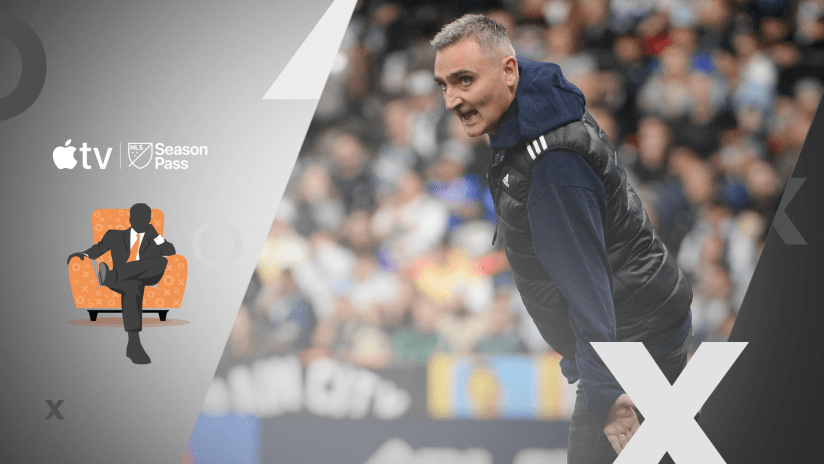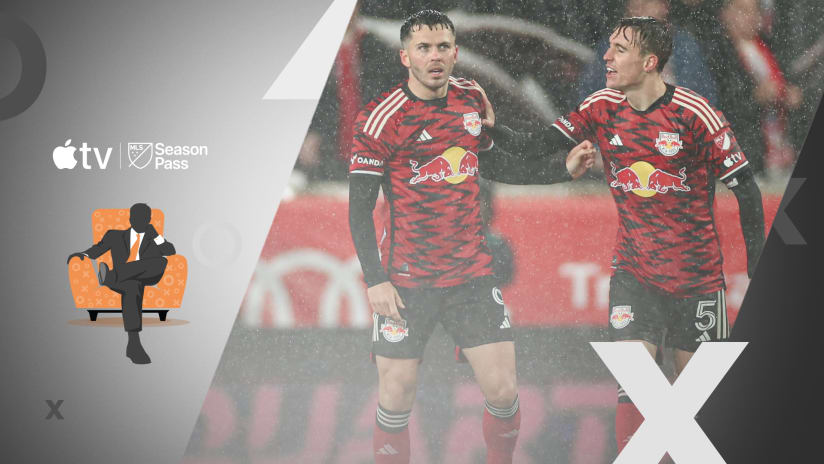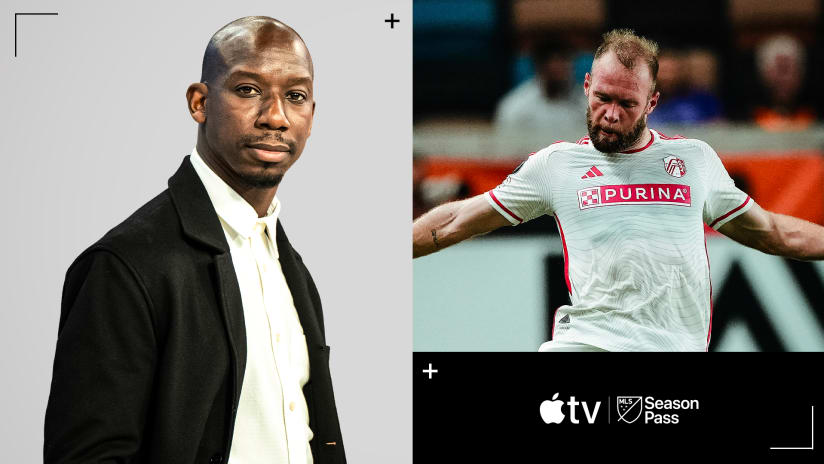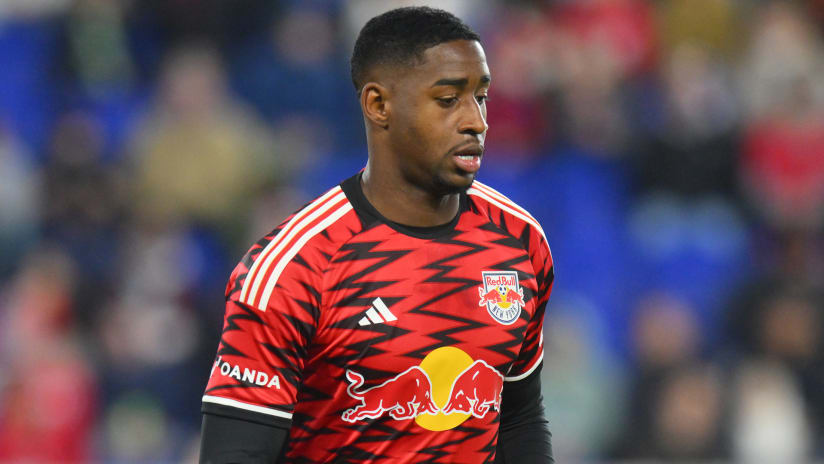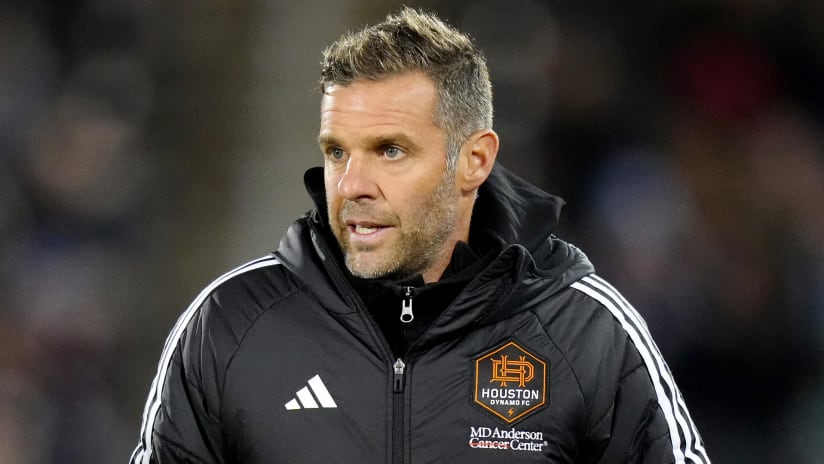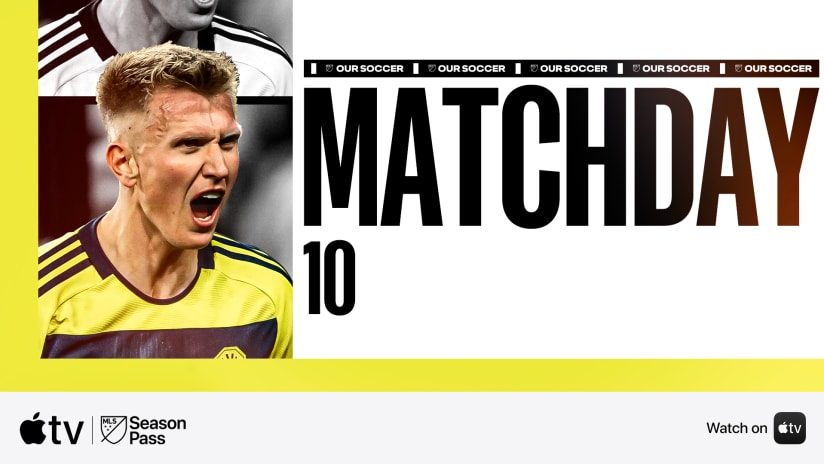It took about four games before most of the North American soccer world decided that the Seattle Sounders were in the midst of a crisis.
Clint Dempsey still wasn't scoring. Marco Pappa was giving balls away left and right through the midfield. Obafemi Martins had iffy body-language. And Sigi Schmid ... obviously the game had passed Sigi by.
This wasn't the reaction you'd expect for a team that was a respectable 2-2-0, but that's how high the expectations were (and are) for this year's Sounders. Thanks to Saturday's 4-0 win over Real Salt Lake, they've now gone 7-1-2 in their last 10, and sit all alone at the top of the standings on both total points and points per game:
1. Figuring out how to use Oba
When people think "target forward" they think "giant, awkward Jan Koller-type physical presence." And to be fair, most target forwards try to play a Koller-esque style, bullying central defenders and dominating in the air.
That is not the only type of target forward. There is also the Obafemi Martins-type, the small and mobile guy who, at first glance, seems like he'd be best off running the channels, but in actuality does his best work with a central defender on his back. Martins excels at hold-up play, using his low center of gravity to shield the ball and his superior vision to create chance after chance after chance. His ability to do that is the key to Seattle's attack, which Schmid has jokingly dubbed "The Amoeba" since it has no defined shapre or form.
It's actually a pretty good description, but there is one immutable principle: In possession, get the second forward central instead of on the wings:
Nobody else in MLS really does this right now, and it's largely because nobody else has Martins. Usually teams like to spread out in attack, but for the Sounders, the closer together they are the better.
2. The Air Marshall
Chad Marshall was probably the riskiest offseason pick-up for any MLS team this season. Schmid bet on the veteran's ability to both stay healthy and play at or near the level he reached in 2008 and 2009, when Marshall was back-to-back MLS Defender of the Year.
So far, Marshall has largely hit that mark. There is always the risk of another concussion, of course – a risk that's present for any athlete in any sport. But it's particularly scary in Marshall's case, since he has a long history with that injury and makes his living in the kind of fearless, head-to-head challenges that make me wince from 1,000 miles away.
Player |
Aerials |
Aerial Won |
Aerial Lost |
Headed Clearances |
Clearances (inc. Punches) |
Blocks |
Interceptions |
Marshall, Chad |
89 |
65 |
24 |
58 |
88 |
13 |
48 |
Johnson, Eddie |
88 |
46 |
42 |
4 |
5 |
2 |
3 |
Bunbury, Teal |
88 |
30 |
58 |
3 |
10 |
2 |
9 |
Friend, Rob |
87 |
51 |
36 |
5 |
5 |
0 |
0 |
Pérez, Blas |
83 |
45 |
38 |
15 |
20 |
0 |
2 |
Barnes, Giles |
82 |
37 |
45 |
5 |
7 |
5 |
8 |
Horst, David |
80 |
58 |
22 |
67 |
95 |
11 |
30 |
Wright-Phillips, Bradley |
79 |
22 |
57 |
4 |
5 |
0 |
7 |
Torres, Erick |
75 |
27 |
48 |
9 |
13 |
2 |
5 |
Marshall is the outright leader in total aerial duels and aerials won. He's tied for the league lead in blocks, is second in interceptions and fourth in headed clearances.
These stats can indicate a defense that's constantly under siege (which is why FC Dallas' Matt Hedges pops up in so many of them), but in Marshall's case, it indicates a scheme that pushes opposing attckers towards a position of strength. It's basic military tactics: Marshall has become the chokepoint.
It's risky, and the Seattle fullbacks can still be exposed – which is what New England did a few weeks ago. But it's been effective much more often than not, and the offseason risk of betting on Marshall has paid off with in-season points.
3. Support from the supporting cast
What the LA Galaxy got right, starting in 2009 and continuing through this year, wasn't just or even primarily the DPs. What they got right was the guys around them.
You never win a soccer game with three players – you need at least 11, and preferably 14. And if you want a trophy, you probably need at least 20 guys to legitimately contribute.
Seattle's DPs – Martins, Dempsey and Ozzie Alonso – are obviously as strong as any trio in the league. But this year, they've got the rest of the roster closer to right by following LA's blueprint. They claimed Chad Barrett and Gonzalo Pinedo off scrap heaps both north and south of the border, respectively. Kenny Cooper was considered damaged goods, but he's had a good year as well. Marco Pappa could arguably fit into this conversation himself.
Barrett, as mentioned on the Sounders broadcast, leads the league in goals plus assists per 90 minutes. This is the mother of all noisy stats, and subject to the demons of small sample size, but a win in March counts the same in the standings as a win in October, and Barrett has been instrumental in many of the Sounders' best moments this year.
But the biggest "addition" has been Lamar Neagle, a long-time Sounder (with a couple of other pit stops) who has steadily improved under Schmid's tutelage. This is very much the LA model – Dunivant, DeLaGarza, Juninho, etc. etc. – and now it's made it all the way up to the north end of I-5.
Neagle finally looks comfortable on the wing. He'd been industrious but out of place there previously, and had his best days as a second forward working off of Martins last year. This season, he's figured out how to pick his spots to cut in and attack while primarily staying wide to pull defenders out of the midfield.
How productive has he been? Try this out:
Neagle still looks like a converted forward at times, but those moments are becoming fewer and further between. Instead of a fish out of water, he's a veteran who has become Seattle's third heat in attack.
And for a team in search of a star to put above their badge, there is no better omen than that.



